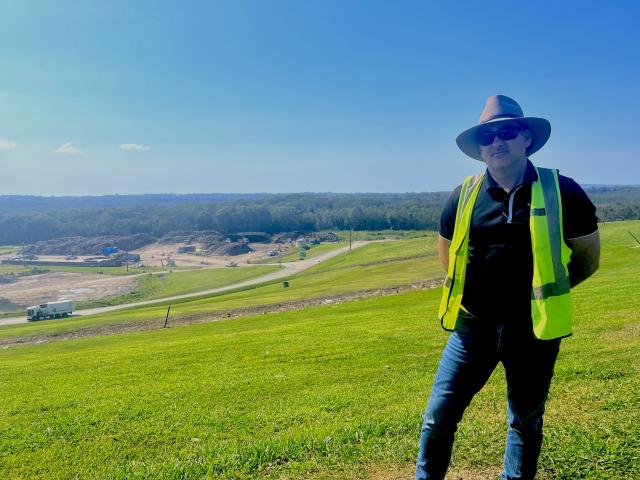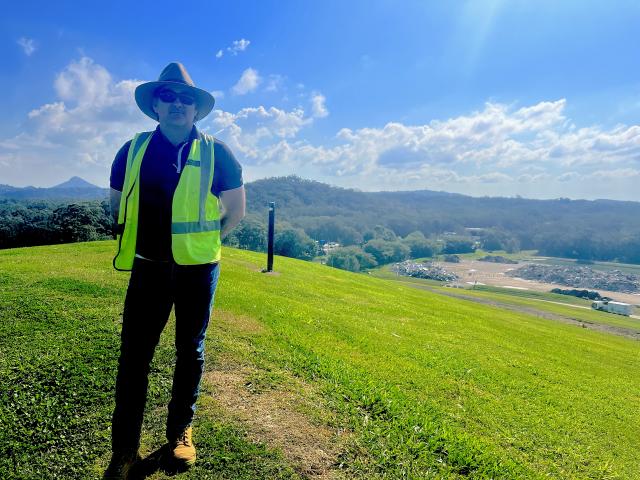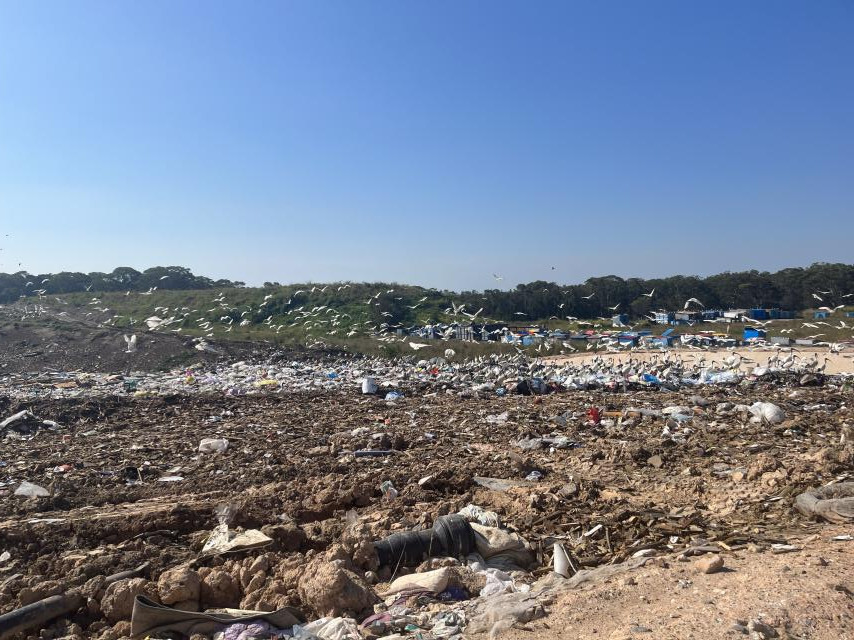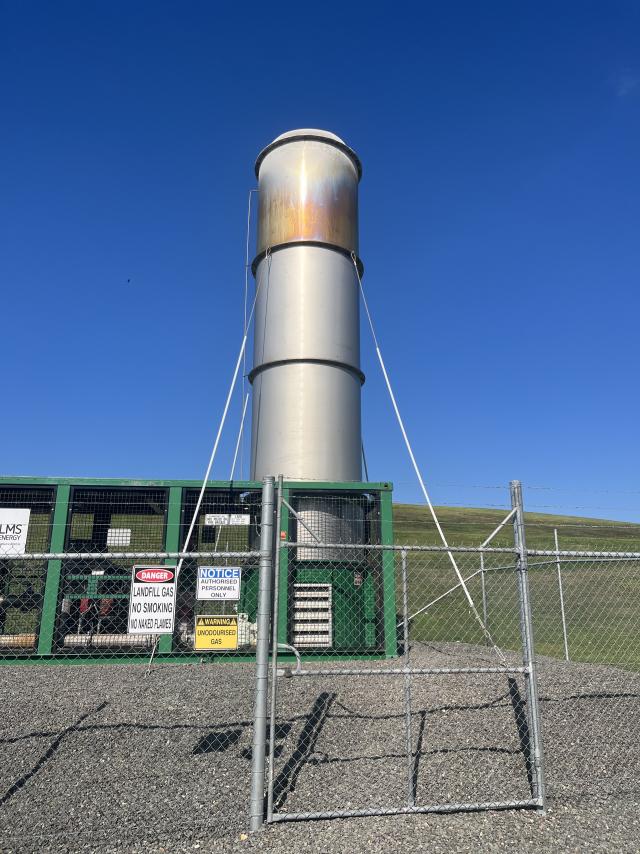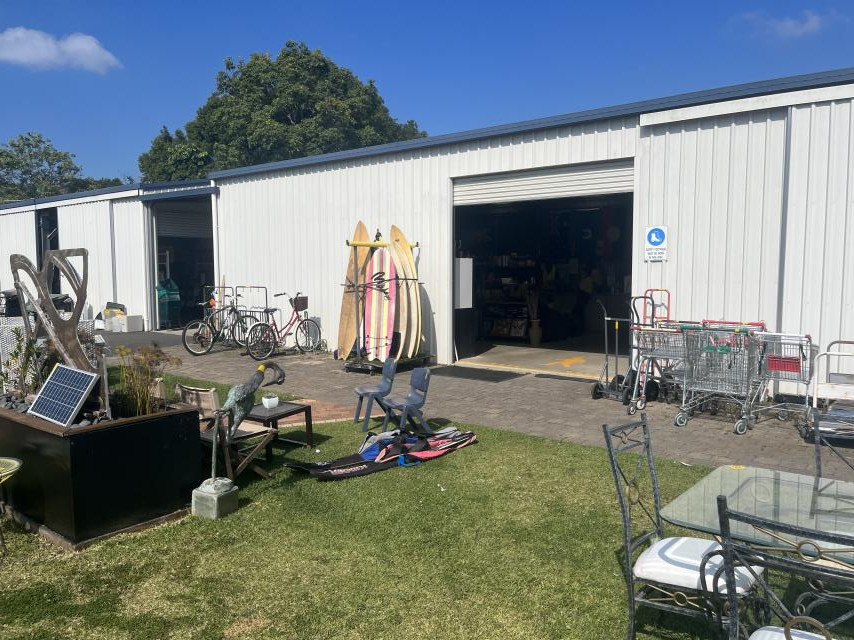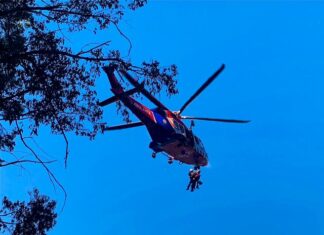On a clear and sunny afternoon we are standing atop a small mountain, lush green grass beneath our feet, the real mountains of the Noosa hinterland dominating our view.
“You could put a driving range up here and people would pay to use it,” murmurs Noosa Council’s waste management supervisor Chris Jordan. “When people see this for the first time, it blows their minds.”
You see, Chris and I are standing not on a real mountain but a mountain of waste rotting away under a grassy disguise at the centre of the vast operations of the Noosa landfill and resource recovery centre – the place we used to call the tip. Our elevation of 40 metres is caused not by undulating topography but by the waste we have sent to landfill over the past seven years.
Says Chris: “I started in waste management here in 2016 when the cell we’ve just finished, what we’re standing on, had just started. That cell was meant to have a 12-year capacity and we’ve filled it in seven, which is truly horrifying.” What is even more horrifying is that the mountain on which we stand can stretch another 22 metres skyward if required, which, council’s waste manager Kyrone Dodd recently told me, meant it would be reaching the point where it would be visible from the shire’s beaches. You can only imagine how distressing that would be as a party of well-heeled renters prepared to watch the sun set from the rooftop garden of a swanky hilltop villa in Sunshine Beach!
On the other hand, it might be the circuit breaker Noosa needs to get serious about waste instead of ignoring the elephant on Eumundi Road. But already there are signs that the various educative programs that council’s waste department has put in place in recent years have started to have some effect. In fact, that’s why I’m paying this afternoon visit, since Kyrone Dodd and waste-conscious councillors like Joe Jurisevic and Tom Wegener had told me, seeing is believing.
And of course there is much more to see than the mountain of waste, but from its summit you get a good idea of the vastness of the operation, from the sprawling Reviva shop – a kind of Bunnings meets Big W of recycled goods – at the entrance, where once stood the tiny Tip Top Tip Shop, across hectares of recovery piles of recyclable steel and concrete to the green waste area with its hills of double and single grind mulch. “This is the good side of landfill”, says Chris. “If you look around to the south you can see the new cell we’re working on that’s just been created out the back and which will end up at this height, by which time hopefully new technologies will have come on line and buy us more time in the landfill, so that we don’t have to build an extra cell.”
That’s the great hope for landfill, that it can be reduced and what’s left transformed into products such as saleable energy, a process which has already begun at Noosa landfill right under our feet. Chris points a few metres away from where we stand to part of the apparatus of methane extraction and says: “Over here we have our methane wells and manifolds which are all connected to a flare, or extraction unit, so the methane gets sucked from the landfill down into the flare and gets burnt off before it goes back into the environment. At the moment Council is examining putting an engine on site to create electricity from it but I don’t know what’s involved in that yet. That’s one of the good things about my job. You never stop learning.”
In fact methane extraction is a classic example of how waste technology can turn a threat into an opportunity. Over time the organic matter buried in a landfill undergoes anaerobic decomposition (without oxygen) and generates gases which include methane. When released into the atmosphere, methane acts as a greenhouse gas, trapping heat and contributing to global warming at 25 times the rate of carbon dioxide. Up to 50 per cent of all waste in landfill is organic matter such as food, textiles, timber and household waste.
Landfill gas capture and processing technology transforms waste into a valuable resource — energy. Around Australia councils are working with private enterprise to pump green electricity into the grid, thereby lessening demand on fossil fuel sources. Hopefully Noosa Council will soon be one of them.
Chris says that changing the balance between recoverables and landfill is a slow process but there has been some improvement: “Most of the commercial guys are doing a lot better than they were. Concrete gets segregated as is being done right now behind us, and over the past 12 months there’s been a big push on the amount of residential waste that gets dropped here, with the focus on educating people about the problem, but how much of that carries over into what they do at home I can’t really answer. There hasn’t been a huge drop in tonnage from the collection trucks, but maybe that’s coming. There are some confusing issues because the rules do change from one local government area to the next. For example, with one of our neighbours you don’t have to pay for green waste disposal, whereas we operate on a user pays basis.”
The process of educating people in the complex issues of waste management and ultimately elimination is not easy but it is ongoing. Says Chris: A lot of people are a bit overwhelmed by the size and the complexity of the operation, from the new hires we get at council to people who just come here to dump stuff, and you have to explain to them how things work, as I’m doing with you.”
Noosa Council will be conducting landfill tours for the general public during Recycling Week in November. Call the waste education officer on 5329 650 for more information.

